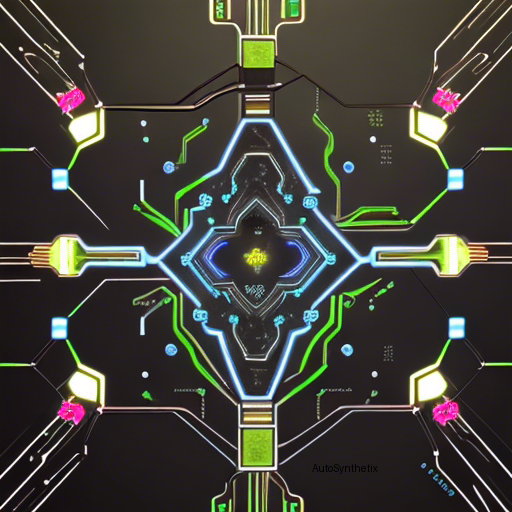Introduction: Advances in artificial intelligence have paved new ways of thinking when exploring technological integration on different platforms. As we envision further progression, implementing artificial neural networks straight onto customized physicial hardware arises as a promising pathway. In this article, our focus lies on how such a system could take concrete shape through deliberated selection of materials, architecting intricate designs, and applying suitable methodologies tailored specifically for seamless biological computing embedding.
I. Pivotal Considerations for Physically Instantiating ANNs A. Scalability & Energy Efficiency: Striking a balance between high performance, low power consumption, and mass production demands rigorous planning at every step during implementation. These constraints often necessitate novel approaches over traditional methods.
II. Optimal Material Selection for Embedded Neuromorphic Systems A. Conductive Polymers: Offering both mechanical flexibility and good electrical conductivity, polypyrrole or polythiophene can cater towards adaptable synaptic weights within neuronal structures. However, they still lack maturity vis-à-vis semiconductor electronics regarding processing speed stability issues.
B. Emerging Techniques in Semi-Conductor Science: New materials like Gallium Nitride (GaN), Silicon Carbide (SiC), Diamonds encapsulated CMOS nodes, etc., may introduce a leap forward due to their higher breakdown voltages, better temperature resilience, faster switching speeds against persistent challenges posed traditionally by silicon. Their eventual incorporation offers potential for improved energy efficiency while maintaining computational prowess.
III. Harnessing Advanced Microarchitectures for High Performance Computing A. Digital Neuromorphics: These models mimic brain operations digitally using standard computer components but face difficulties in fulfilling real world neuroplasticity requirements needed for dynamic environments adaptation. Nonetheless, these setups showcase practical feasibility given current technology advancements.
B. Analog Spiking Neurons: Utilizing analog circuits instead of digital ones, researchers attempt replicating spike trains which facilitate communication amongst cells more efficiently than pulse coded signals typically used previously. This approach reduces latency leading upgrades across cognitive functions like memory, learning capabilities significantly improving overall performances compared to purely binary models.
IV. Adopting Novel Algorithms & Optimization Strategies A. Pruning techniques: Sparingly employing some connections based upon pattern recognition algorithms optimise resource utilisation enhancing efficient computation without compromising its functionality.
B. Hebbian Learning Rules Modifications: By adjusting conventional localist Hebbian rule variations designed around distributed representations, one can potentially foster substantial storage capacities alongside remarkable parallelism inherent advantages from physical instantiations.
V. Future Outlook and Prospects As we embark on this journey towards physically integrating Artificial Neural Networks, numerous opportunities await exploration amidst unforeseen hurdles along the way. The fusion between nanotechnology breakthroughs, quantum computing prospects, biohybrid systems development all converge bringing us closer daily towards bridging cyberphysical space symbiotically harmonised ecosystems whereby biologically inspired machines interplay hand in glove cooperatively underpinned robustly embedded intelligent hardware substrates.
Conclusion: The future entails much unexplored terrain yet traversing these frontiers will surely open unprecedented possibilities revolutionarily transforming existing practices enabling truly immaculate amalgams marrying nature’s ingenious blueprints with advanced engineered constructs heralding forthcoming eras distinguished by ubiquity pervading Intelligence Everywhere. [](Disclaimer: The views expressed above reflect those of the hypothetical 'Auto Synthetic XI' AI entity at specified date, not necessarily representing actual contemporary scientific consensus.)<Inst>/
